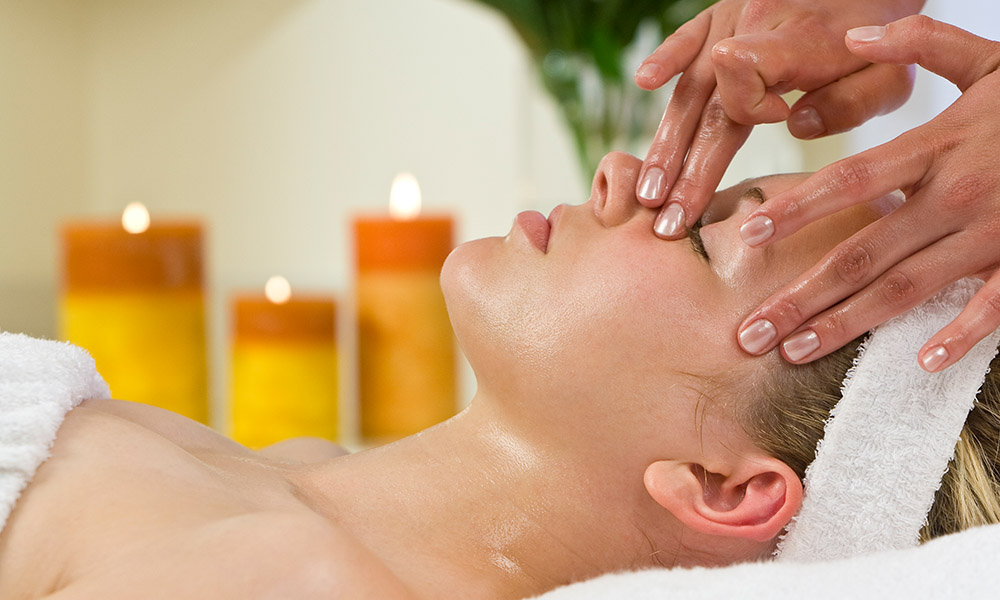As a skincare professional, you spend a lot of time getting to know your client and getting to know their skin. Identifying your client’s skin type is one of the first things you do, and it determines everything that comes after from treatment to product recommendations. When a client has combination skin, it can be a little tricky to find the right balance between addressing excess oil and hydrating dry skin.
Here is what you need to know about treating a client with combination skin.
How to Identify Combination Skin
While many people think they have dry or oily skin, combination skin is the most common skin type. As is the case with many skin types, there are several different factors that come into play when it comes to skin texture, clarity, and moisture level. With combination skin, it’s completely normal for the skin to be dry in some areas and oily in others.
Here are some of the most common signs of combination skin:
- The skin becomes oily in some areas but not others within 20 minutes of cleansing
- Normal moisturizer works well on the cheeks but makes the T-zone oily
- The pores on the nose are visibly larger than the pores on the cheeks and jawline
- Dry, flaky patches of skin frequently develop on the scalp
- Some areas of skin are dry while others are breaking out at the same time
- The skin tends to be oilier in the summer and drier in the winter
Genetics are the biggest factor that determines your skin type. Your genetics impact everything from the amount of oil your skin produces to the rate at which your skin cells turn over. People who inherit overactive sebaceous glands typically experience more issues with oil production which can result in combination skin. Hormones are another factor that can cause the skin to dry out in some areas while over-producing oil in others. Environmental factors like heat and humidity play a role as well.
What Are the Most Common Skin Challenges?
You may be surprised by how many of your clients identify their own skin type incorrectly. Many people with combination skin fail to realize that’s what it is – they simply assume their skin is dry or oily depending which issue is most prevalent at the time. Though the condition of the skin can change based on a variety of factors, skin type generally doesn’t change since it is largely based on genetics.
The biggest challenge with combination skin is finding the right balance between hydrating dry areas and controlling oil in the others. Many people with combination skin avoid using sunscreen and moisturizer because they’re worried it will create more oil. The most important thing you can teach your clients is that the best thing they can do for their skin is to choose products appropriate for their skin type. With the right products, people with combination skin can balance oil production and keep the skin hydrated and healthy.
Dry skin is easy to treat with a good moisturizer, but oily skin is a bit more challenging. When people with combination skin try to deal with excess oil through excessive exfoliation or harsh products that contain drying ingredients, it may over-dry other areas of skin. This often leads to irritation and worsening skin problems with dryness, redness, breakouts, and excess oil.
The Basics of Treating Combination Skin
Every client is unique, and so is their skin. When it comes to combination skin, no two treatment plans will be exactly alike – you will need to customize it to the client’s needs every step of the way.
Here are some important things to keep in mind when treating combination skin:
- Start with a gentle facial cleanser to remove dirt, impurities, and excess oils. Something like micellar water is a great pick to help mattify an oily T-zone.
- Consider the time of day when choosing a cleanser – a foaming cleanser is good to remove oil in the morning while a cream-based cleanser can replenish moisture in the evening.
- Apply an alcohol-free toner while the skin is still damp – choose something rich in antioxidants, essential oils, and anti-inflammatory ingredients.
- If needed, use different moisturizers on different parts of the face – choose an oil-balancing moisturizer on the T-zone and a richer moisturizer on the cheeks. There are many moisturizers that contain “adaptogens”, natural ingredients capable of normalizing the oily and dryer parts of the skin.
- Try multi-masking – using different masks on different areas of the face to address multiple skin issues all at the same time.
Many people find that their skin changes with the seasons, so be sure to customize your treatment plan according to the skin’s current conditions but encourage your client to check in again after a month or two. Monthly facials are always a good idea to keep skin conditions in check and so you can keep your client’s skincare recommendations up to date.
Tips for Recommending Products

The most important aspect of treating combination skin is restoring and maintaining balance. It’s about giving dry areas of skin the moisture they need without overwhelming oily areas of skin. Consistency is key with combination skin, so encourage your clients to develop a simple daily skincare routine with gentle exfoliation 2 to 3 times per week. It may take a few weeks to restore the skin’s balance, but with the right products and some healthy skin habits, your clients will see the results they desire.
Here are some tips for recommending products for combination skin:
- Recommend a gentle chemical exfoliant rather than a scrub – something with AHAs or BHAs should work well and can be used 1 to 3 times per week.
- Suggest your client keep some blotting papers on hand to deal with excess shine during the day between their morning and evening cleanse. Or spray on an alcohol- free toner throughout the day which will enliven, purify and hydrate the skin in just one simple spray.
- Impress the importance of UV protection on your client – recommend they wear broad-spectrum sunscreen SPF 15 or higher on a daily basis.
- Consider recommending a topical retinol or AHA-BHA rich serum if your client struggles with acne in areas of oily skin – these should be applied after cleansing and toning, before moisturizing.
- When shopping for new products like cleanser or toner for the full face, choose something designed for all skin types – after all, your client is addressing two different skin types.
When a client comes to you with combination skin, it’s important to take the time to identify which areas of skin are dry and which are oily. From there, you can educate your client about the importance of treating these areas differently to restore and maintain balance. You are your client’s best source for quality skincare advice, so take your role just as seriously when it comes to education as you do when it comes time for treatment and product recommendations.
As always, it is essential to manage your client’s expectations and help them understand that achieving healthy and balanced skin takes time. Follow the tips above to get started on the right path.

